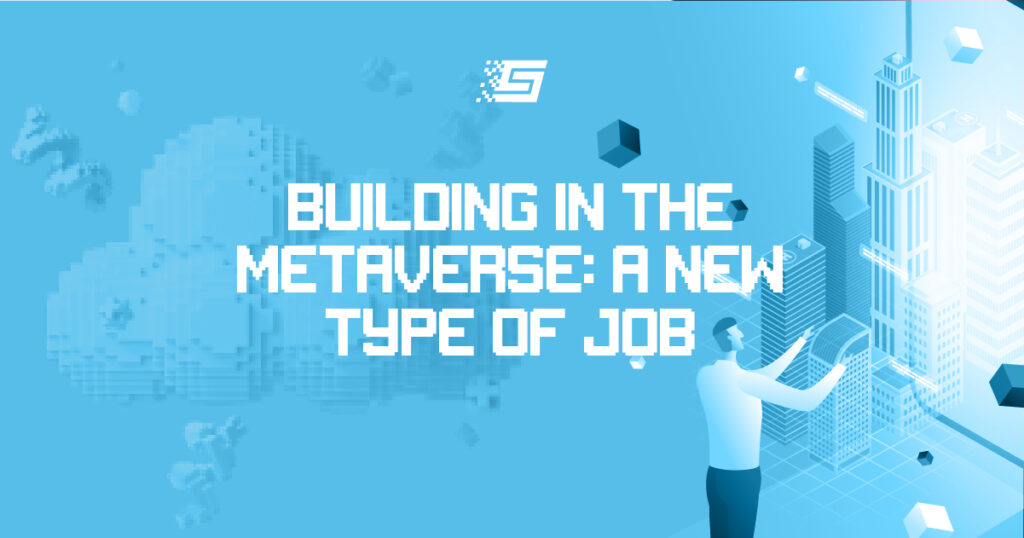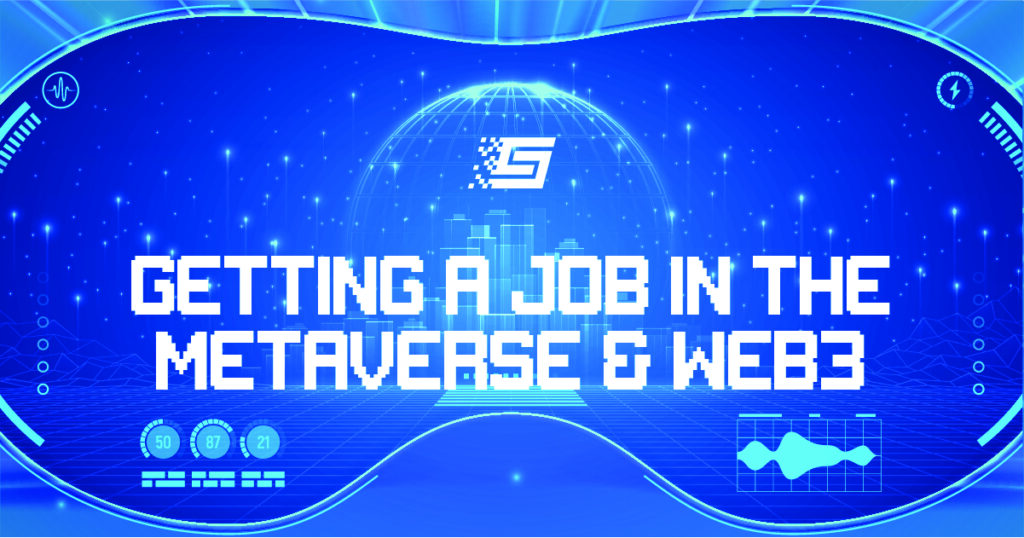How Web 3.0 Will Change The World As We Know It
Collectively, we have spent nearly 4 trillion hours throughout 2021 looking at our phones. As incredible as that may sound, our ever-growing reliance on the internet is undoubtedly becoming more pronounced. It is redefining the way people live, work and play as technology continues to develop.
As we will see, web 3.0 (or simply web3) is a new internet ecosystem as defined by ownership of content, data, and finances. While some of the particulars about web3 may be too technical or even incomprehensible to the average internet user, some of its broader trends and concepts offer clear, exciting opportunities in many areas.
The Internet’s Beginnings
In the early 90s, with the internet in its infancy and the technology only used to a somewhat limited capacity, the setup was fairly simplistic. The World Wide Web consisted mainly of static pages in a “read-only” style, and internet users could only consume information.
We didn’t have Facebook or Netflix back then; sites like Britannica and Yahoo were the big names dominating the space. IP, HTTP, URI, and HTML made up the technological infrastructure. This is what we refer to now as Web1; the dot-com era.
Progression of Web1 to Web2
By the year 2000, when the dot-com bubble burst, many internet companies disappeared. The brilliant minds of the tech world began developing the innovations such as JavaScript, HTML5, and CSS3, ushering in a more interactive version of the web; Web2.
With this setup, users could now make their data available to a service provider, such as a social media platform or a payment provider, to make transactions or interactions with the site or app.
The other main difference applies when multiple users access the same website and can see totally different content. The site receives data from the users and shows a personalized feed and different advertising content to each.
Web2 significantly altered the way we all communicate and interact. We can make video calls on Messenger, do shopping on Amazon, book an Airbnb, paid for through fintech platforms. Web2 increased our wealth and convenience but has also created new challenges.
Web 2.0 Issues
Every Web2 application has a centralized corporation controlling it, including those of the banking and financial systems. When making a bank transfer, data gets stored on the centralized servers of the particular bank. The bank acts as an intermediary by carrying out the transaction. The user hands over the data, relying on the bank to execute the transaction. A charge for the service then applies.
With the server-client structure, centralized private corporations control and own user data. This is a very lucrative business model. Inevitably, we have come to see the monopolization of the market by certain entities and businesses.
The New Web 3.0 Model
Web3 is about decentralization. With the web2 model, data is stored on a centralized server. With web3, it gets spread across a decentralized computer network. By replacing the infrastructure with distributive ledgers such as the blockchain, the market power of these companies currently acting as intermediaries is broken down.
Transactions can now go through decentralized blockchains like the Bitcoin network. This way, information is independently verified through mathematics and computing power, returning data sovereignty and ownership rights to the user.
Web3 Applications
Bitcoin’s launch in 2009 signaled this new era of the internet. It is a peer-to-peer network based on blockchain technology. Five years later, the Ethereum blockchain was developed using the same technology. It enables the automation of token-based transactions with smart contracts.
Smart contracts eliminate the need for centralized intermediaries and create a “trustless” network. With intermediaries no longer required, the value chain becomes cheaper and more efficient.
Blockchain’s immutability means data entered is irreversible and permanently recorded, so risks such as tampered data, fraud and hacks are eliminated. The system is also completely transparent, as users can view the data on public chains.
Furthermore, blockchain-based Web 3.0 technologies offer users a greater sense of ownership. Buying certain tokens or cryptocurrencies can entitle users to a stake in a network or protocol.
Non-fungible tokens (NFTs) are another Web3 application. NFTs represent securitized ownership of digital assets, for instance, a graphic, artwork, or a domain.
NFTs are unique and thus enable transparent documentation of digital property rights and automated transfer without the need of centralized intermediaries, a crucial feature of a wide range of Web3 applications.
Future Use Cases
The potential of web 3.0 is virtually unlimited. When looking at it from a wider perspective, it becomes clear that the transition from web2 to web3 will revolutionize not only the web but many other aspects of life too.
Finance
We have already mentioned finance, but let us dive a bit deeper into the ways in which the blockchain and cryptocurrency can transform this sector.
Cryptocurrencies have many other attractive features beyond the obvious benefits of instant transfers without the need for a bank and making transactions with minimal fees.
DeFi is currently the fastest-growing segment and the most significant opportunity for blockchain technology. Both crypto-native firms and the institutions they aim to replace are rapidly seeking-out employees for Web3-focused positions.
Decentralized Finance (DeFi) is a reinvention of traditional financial products, trading exchanges and markets, lending and borrowing, and more, through the use of blockchains and oracles. DeFi products give access to cryptocurrencies that traditional financial products don’t.
This segment of the cryptocurrency space has three main dynamics driving it. Firstly, mistrust in the traditional banking system has led to an interest in non-traditional finance. The desire for a transparent, fair relationship between individuals and platforms is currently fueling the growth of Web3. Over the course of 2020, 57% of customers reportedly lost trust in their bank, and in 2021, 51% of Gen Z, and 49% of Millennials said they preferred a fintech over a bank as their trusted financial brand.
The second factor is access to new and alternative financial products. DeFi is one of the most popular ways to hold and use cryptocurrency. It offers an essential service to anyone interested in crypto.
Lastly, DeFi provides access to financial products only available to advanced traders, industry professionals and institutions in the past. Decentralized exchanges and peer-to-peer borrowing protocols also become easily accessible. With all this at their fingertips, users can profit from transparent and profitable financial opportunities and make use of decentralized lending protocols.
Decentralized Organizations
Web 3.0 may replace corporate hierarchies and conventional methods of companies’ decision-making processes in the near future. Decentralized Autonomous Organizations (DAOs) use a governance mechanism based on tokens. In DAOs, decisions get voted on democratically, with voting rights based on the number of tokens a person owns.
Employees of a DAO get rewarded for their work in tokens. Instead of receiving a set salary, a worker’s compensation is according to their contribution to the DAO’s mission in the form of ownership rights in the DAO, with the goal of creating additional incentives.
Politics
Democratic processes in politics may also shift to using a token-based Web3 system. Instead of having a representative democracy with centralized decision-making, democracy could see a renaissance in Web3. Elected representatives are yet another example of unnecessary intermediaries that a token-based governance system could replace.
The Metaverse
Perhaps the most significant use of web3 tech is the metaverse. In a nutshell, it is a virtual world where people can communicate, trade, play, learn, or otherwise interact with each other. Real estate, merchandise and other items come in the form of NFTs with smart contracts used to execute transactions, paid for in cryptocurrencies. Whereas in Web2, the user is the product, in Web3, they are also the owner.
Gaming
Play-to-earn gaming will feature as one of many attractive options that users can participate in throughout the different metaverses. Some of the biggest companies and brand names have invested heavily in the metaverse and the web3 technologies that complement it.
The list could go on. One thing is for certain, web3 technology can certainly transform our lives. How long it will take to fully develop and adopt is another question.
Written by: Tyler
Follow me on Twitter!


